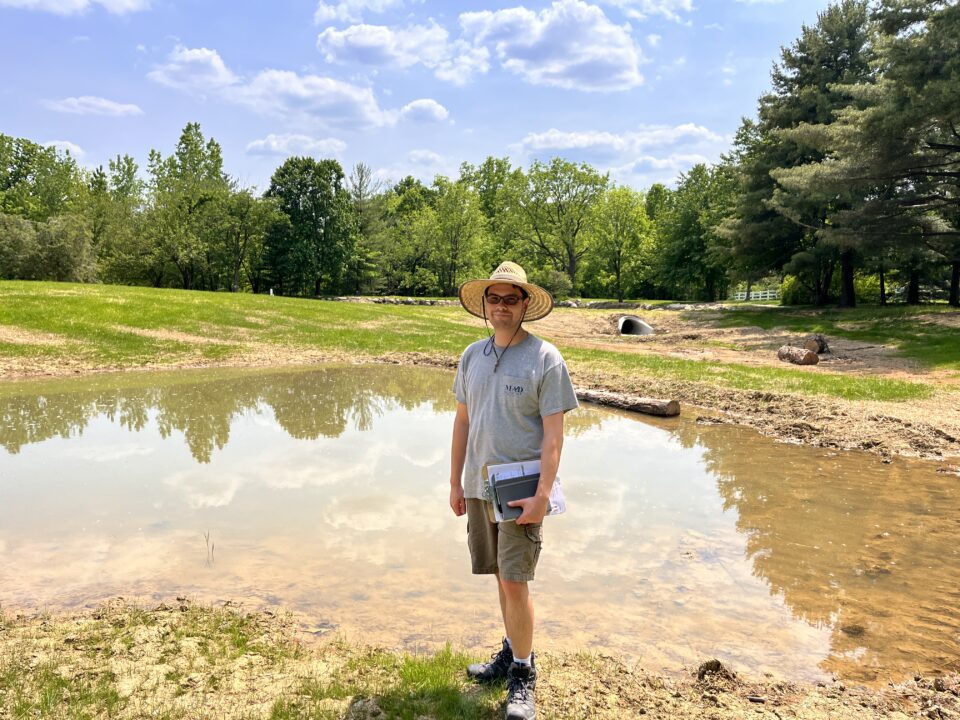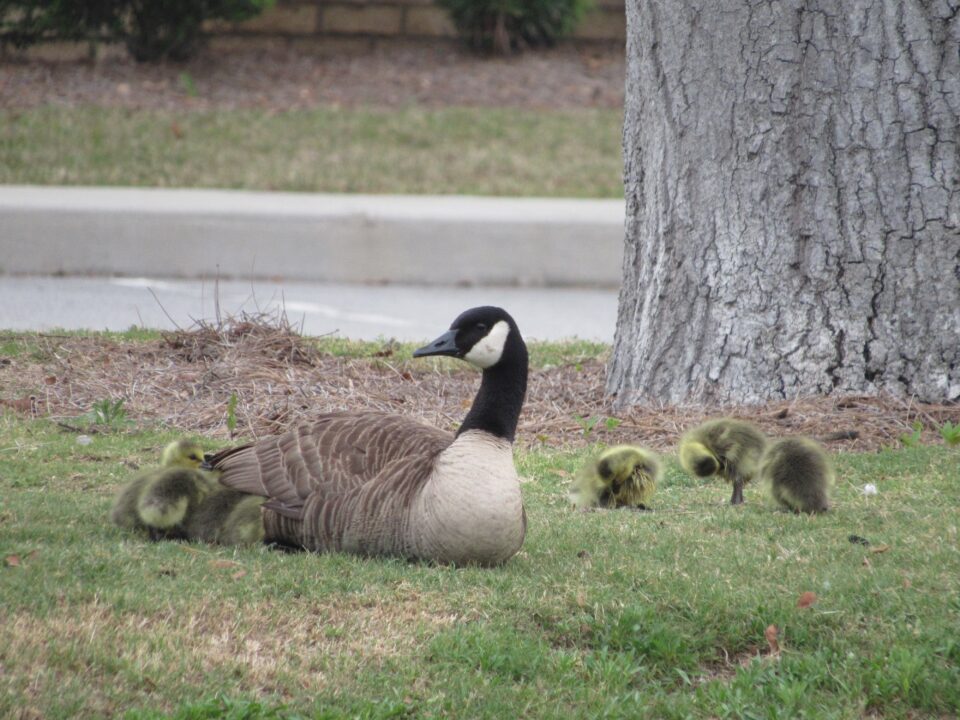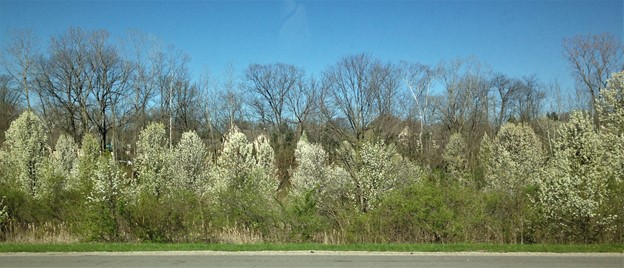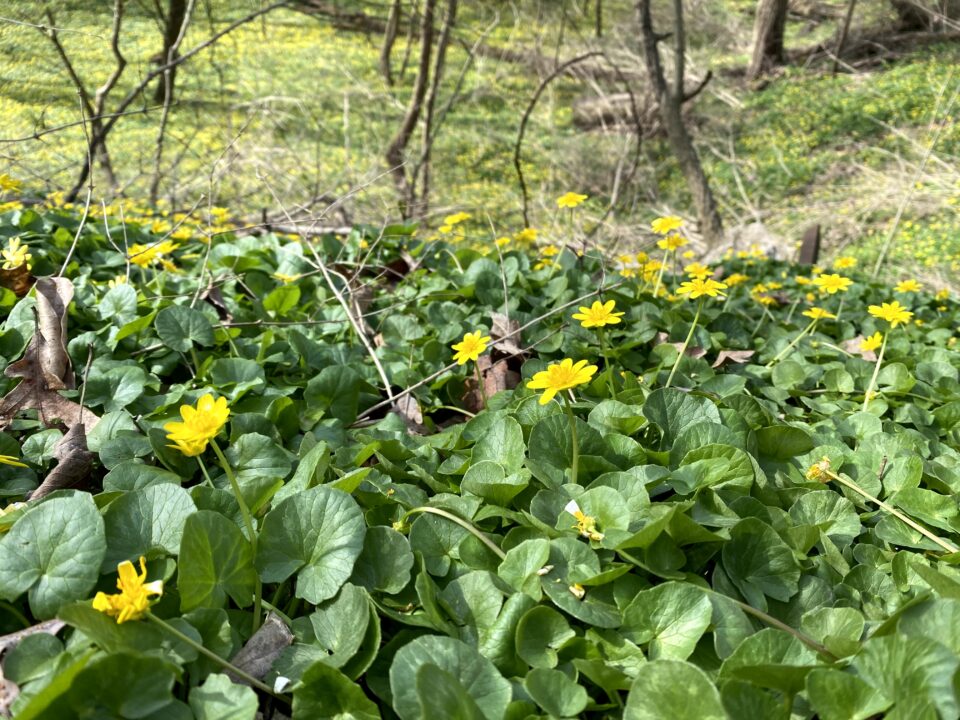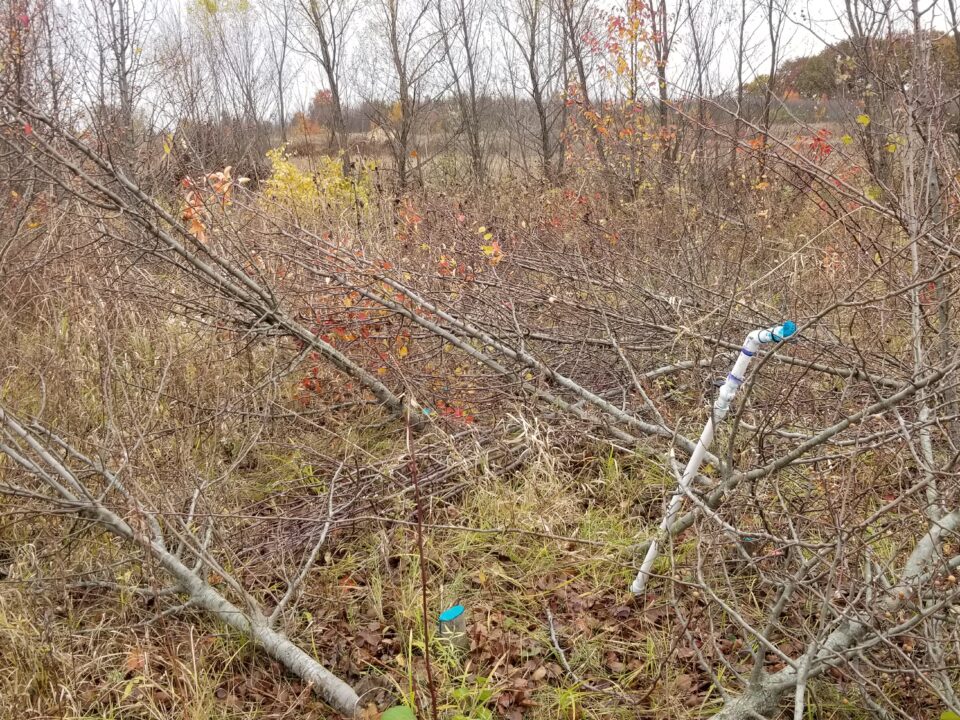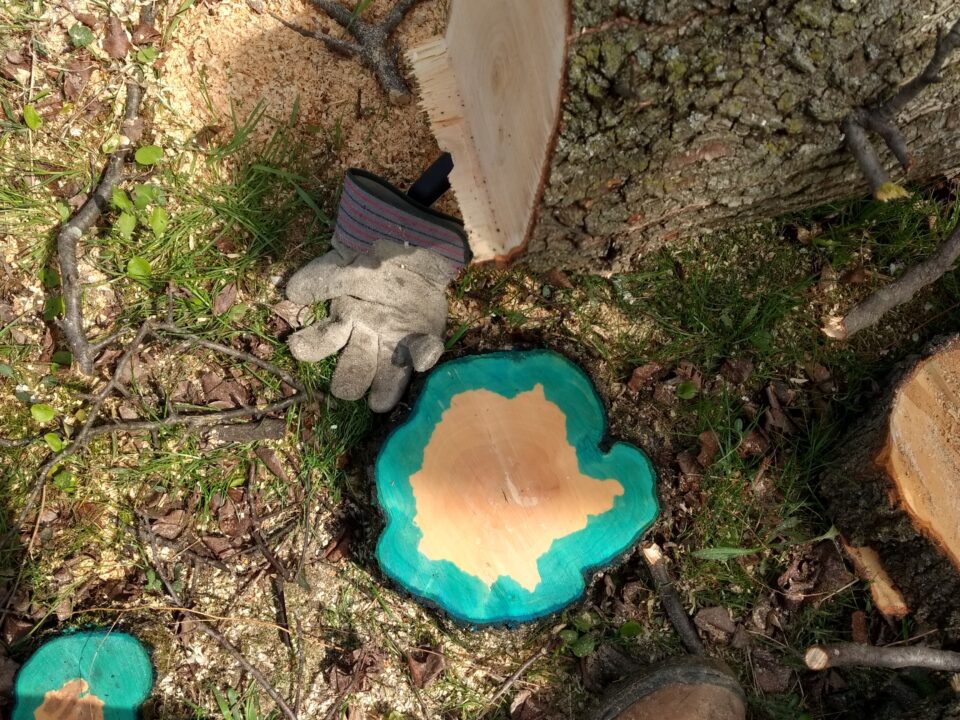January 5, 2025
December 27, 2024
We’re proud of the team we have at MAD and are eager to see them grow in their various specialty areas. This year many staff worked towards certification programs and continuing education credits. Two of note are Restoration Ecologist, Dan Hribar, and Restoration Designer, Robert Keast. Dan began working towards becoming a Certified Ecological Restoration Practitioner through the Society of Ecological Restoration (CERP-IT). He also completed the Ohio DNR’s Nature-based Shorelines course. Robert continues to level up in stream restoration design series. He is currently a level III. Both certifications will serve us well in creating site appropriate, cost-effective, long-lasting restorative changes for our clients and the natural world.
April 22, 2024
By: Jenny Adkins April 22, 2024 We’re guessing that at first glance, most people living in suburban American areas cringe at the sight of a Canada Goose (Branta canadensis), especially if you live near a golf course, pond, or detention basin. These large, handsome geese are actively managed as nuisance species due to their aggressive behavior and, how to put this, tremendous excrement output, which dirties sidewalks and adds nutrients to water resources. As grazers, they can also impact plant establishment. BUT, did you know that they were once on the verge of extinction? In the early 1900s, they were regularly hunted for sport and for food. Unregulated hunting accompanied with draining wetlands for farming, building, transportation routes, etc., caused their population to plummet. They […]
February 27, 2024
By: Cody Wright March 1, 2022 This iconic suburban tree has come to be known by many different trade names throughout the years: Bradford Pear, Cleveland Select, Metropolitan Pear. Yet they all derive from one species native to China—the Callery Pear (Pyrus calleryana). This NNIS was introduced to the U.S. in the mid-1900s as an ornamental street and yard tree and quickly gained popularity for its bright white, early spring blooms and colorful fall foliage. Through selective cultivation, multiple sterile cultivar types were created and mass produced for public purchase. According to Dr. Theresa Culley, Professor and Head of the Department of Biological Sciences at the University of Cincinnati, “It is not the cultivar itself that is invasive, per se, but rather the problem arises […]
January 9, 2024
By: Jenny Adkins April 8, 2021 Everyone seems to be aware of our woody invasive plant species like honeysuckle, callery pear, wintercreeper, privet, etc. One thing we’re noticing this year is people gushing over the plant featured here- lesser celandine (Ranunculus ficaria). Yes, it’s beautiful. It’s one of the first things to come up in spring along floodplains and mesic soils, carpeting the ground in lush green foliage and cheery yellow flowers. You’ll notice at second glance that beneath that lush carpet, there’s NOTHING else growing under or around it. These areas should be loaded with diverse wildflowers- harbinger of spring, bluebells, anemone, phlox, ginger, bloodroot, solomon’s seal, ramps, trout lilies, spring beauty, Dutchman’s breeches, geranium, orchids, twin leaf, trilliums, toothwort, cresses, violets, mayapple, larkspur, […]
December 27, 2022
We’ve always touted ourselves as having a “team that works like MAD,” but we’ve got to hand it to our Technicians and Conservation Practitioners, who truly personify this phrase. This year they’ve aided in monitoring, wildlife and vegetative surveys, performed GIS and drone surveys, organized and completed planting efforts, volunteered time to environmental causes, and tackled 250 (TWO HUNDRED AND FIFTY!) acres of invasive species management. They are lean, mean, honeysuckle-buckthorn-multiflora rose-porcelain berry-euonymus-pear-tree-of-heaven-bittersweet-privet-phragmites-cattail-reed canarygrass-garlic mustard-lesser celandine-thistle-knotweed-vinca-and English ivy killing machines! Each of our staff on this team are certified pesticide applicators or trained service persons and they use meticulous care when mixing and applying herbicide, including choosing the most effective chemical that poses the least amount of environmental damage, precisely targeting invasive species and minimizing […]
January 7, 2022
Between April 14 and November 4, 2021, our skilled team of technicians removed woody invasive species on a roughly 45-acre area within Rocky Fork Metro Park. Targeted species included Callery Pear (Pyrus calleryana), Autumn Olive (Elaeagnus umbellata), Bush Honeysuckle (Lonicera maackii), Multiflora Rose (Rosa multiflora), Privet (Ligustrum spp.), and Tree-of-Heaven (Ailanthus altissima). Initial site management was completed in the spring using a cut-stump method to fell the largest trees and shrubs in the project area. Chainsaws were utilized for larger specimens, and a brush-cutter was employed to efficiently raze small and medium sized vegetation in dense clumps. Cut stems were treated using a mix of the aquatic-approved triclopyr product, Garlon 3A, as well as an aquatic-safe, non-ionic surfactant and blue tracker dye. This herbicide mix […]




